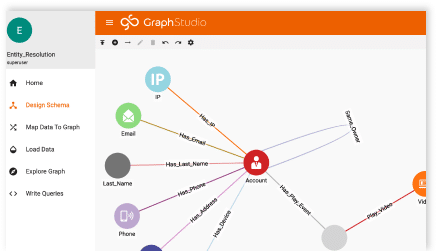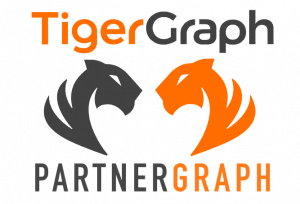TigerGraph 3.0 Further Extends GSQL Capabilities as Acclaimed Database Conference Acknowledges Query Language’s Industry Impact
REDWOOD CITY, CA – July 22, 2020 – TigerGraph, the only scalable graph database for the enterprise, today announced the company is furthering the democratization of graph analytics with new capabilities for its industry-recognized query language, GSQL. GSQL, which brings modern aggregation support to graph analytics, is a property graph query language designed for SQL users. The company’s current advances with GSQL make this innovative query language even more similar to SQL, the standard language for storing, manipulating, and retrieving data within a relational database. The result: A lower barrier to entry and easier adoption for SQL users as they chart their advanced graph analytics course. TigerGraph’s work with GSQL has garnered industry recognition from SIGMOD, the premier international database conference.
“GSQL’s innovation, speed and scalability boost its ease of use within the SQL community, delivering a SQL-like experience with graph analytics,” said Dr. Yu Xu, CEO, and founder, TigerGraph. “Simultaneously, we’re working to help enterprises – from banks to healthcare companies – uncover meaningful, actionable, real-time insights from connected data that can improve people’s lives. GSQL’s acknowledgment by SIGMOD, the renowned data management academic conference, validates its influence on the graph database industry as well as the database community at large. Our work in advanced graph analytics is ongoing and ever-evolving, and we remain dedicated to supporting inventive customer applications while innovating our product offerings.”
Database experts have recognized GSQL’s power for efficient expression and execution of graph algorithms and graph analytics. The GSQL-related advancements complement TigerGraph 3.0, which delivers several “no code” advanced graph analytics features. These “graph for all” features allow data scientists and business users to move data from the relational database to graph database and build advanced analytics patterns by drawing — without the need to write complex queries. TigerGraph 3.0 extends GSQL even further with rich pattern matching with analytics and additional support for distributed GSQL.
TigerGraph’s GSQL builds on SQL functionality and extends it with a unique construct called an “accumulator.” Accumulators allow users to perform complex computations faster on connected datasets. The Visual Query Builder feature in TigerGraph 3.0 allows users to employ accumulators to aggregate without writing code. TigerGraph’s accumulators are more powerful and richer than traditional aggregation functions in SQL; as dynamic data objects, with parallel processing like MapReduce and Spark, they are an integral part of modern graph analytics.
TigerGraph’s Chief Scientist and distinguished researcher, Dr. Alin Deutsch, presented the GSQL language paper at SIGMOD 2020, outlining the massive benefits for analyzing connected datasets with graph analytics. TigerGraph’s GSQL will support GQL, the upcoming ISO language for property graph querying currently being created by the same international working group that looks after the SQL standard. TigerGraph’s language standard team — which also includes VP of Engineering Dr. Mingxi Wu and Head of Product Strategy and Developer Relations Dr. Victor Lee — is actively involved in the project. The team will work to ensure that GQL and TigerGraph’s unique analytical capabilities are compatible.
The research paper presents the following GSQL-related design features, which are unique in the industry:
- GSQL includes three features which synergize to form a modern graph analytical capability and address an important class of iterative graph algorithms – algorithms that are left out by other current and proposed languages. These three features are default shortest-path semantics of pattern matching, accumulators as vertex-attached run-time attributes and global query states, and control flow primitives.
- GSQL is unique in the industry due to its adoption of shortest-path semantics as the default pattern matching semantics. Shortest-path semantics is currently being discussed in the standard body.
- GSQL’s aggregation support — based on the concept of accumulators — subsumes SQL-style aggregation and allows single-pass traversals that compute in parallel multiple aggregations, even on disjoint criteria. The paper quantifies experimentally the significant speedup of accumulator-based vs. SQL-style aggregation for graph traversal queries.
Announcing TigerGraph 2020 Graphathon
As a further step towards the democratization of graph analytics, TigerGraph has launched the TigerGraph 2020 Graphathon. The two-month long contest invites and challenges developers at all levels to apply their unique knowledge and ideas to create an application or design pattern which enables and empowers others to use and benefit from TigerGraph technology. The rapid growth of the TigerGraph developer community confirms the company’s belief that making and understanding connections improves lives.
Additional Resources:
- SIGMOD industry paper list: https://sigmod2020.org/sigmod_industrial_list.shtml
- GSQL SIGMOD paper link: https://dl.acm.org/doi/pdf/10.1145/3318464.3386144
- SIGMOD oral presentation for TigerGraph paper: https://www.youtube.com/watch?v=U8B53x8t5t8&feature=youtu.be
- GQL Wikipedia entry: https://en.wikipedia.org/wiki/GQL_Graph_Query_Language
- GQL project link: https://www.gqlstandards.org/existing-languages
- Graphathon: https://www.tigergraph.com/2020/07/06/tigergraph-2020-graphathon/
Helpful Links
- TigerGraph Cloud
- TigerGraph Developer Community
- TigerGraph Website
- TigerGraph Blog
- TigerGraph on Twitter
- TigerGraph on LinkedIn
About TigerGraph TigerGraph is the only scalable graph database for the enterprise. TigerGraph’s proven technology connects data silos for deeper, wider and operational analytics at scale. Four out of the top five global banks use TigerGraph for real-time fraud detection. Over 50 million patients receive care path recommendations to assist them on their wellness journey. 300 million consumers receive personalized offers with recommendation engines powered by TigerGraph. The energy infrastructure for 1 billion people is optimized by TigerGraph for reducing power outages. TigerGraph’s proven technology supports applications such as fraud detection, customer 360, MDM, IoT, AI, and machine learning. The company is headquartered in Redwood City, California, USA. Follow TigerGraph on Twitter at @TigerGraphDB or start free at tigergraph.com/cloud.
###
Media Contact
Cathy Wright
Offleash PR for TigerGraph
[email protected]
650-678-1905







